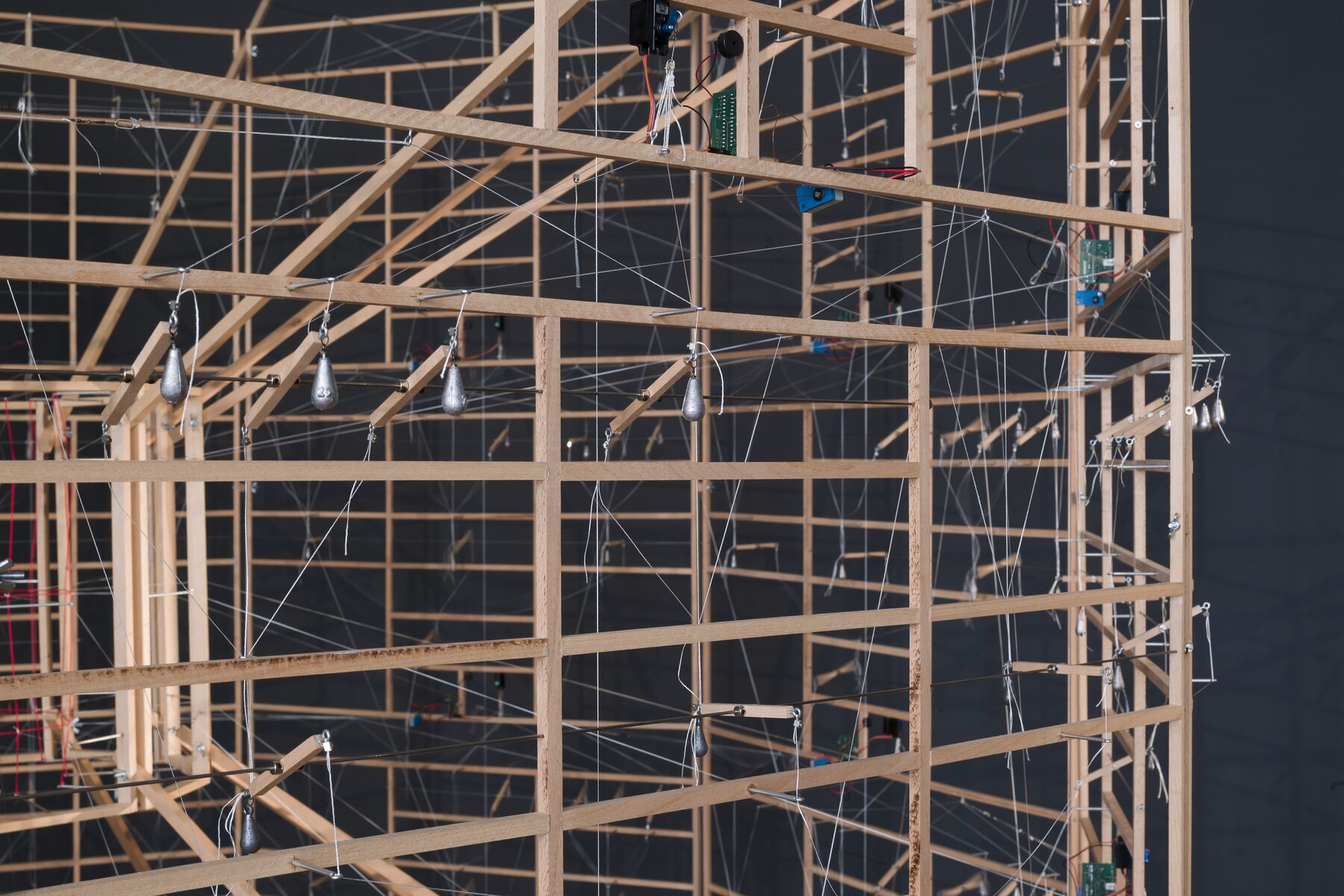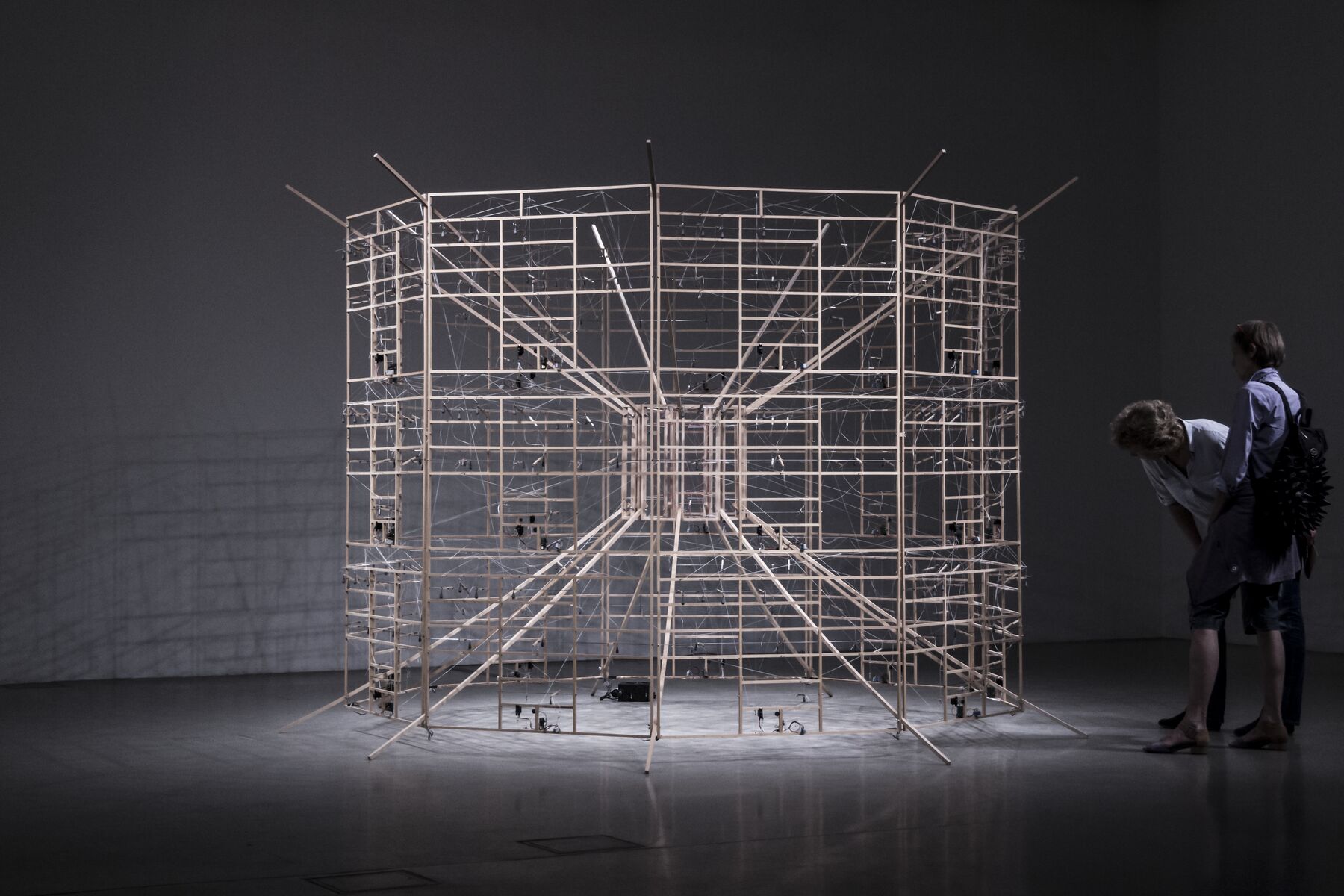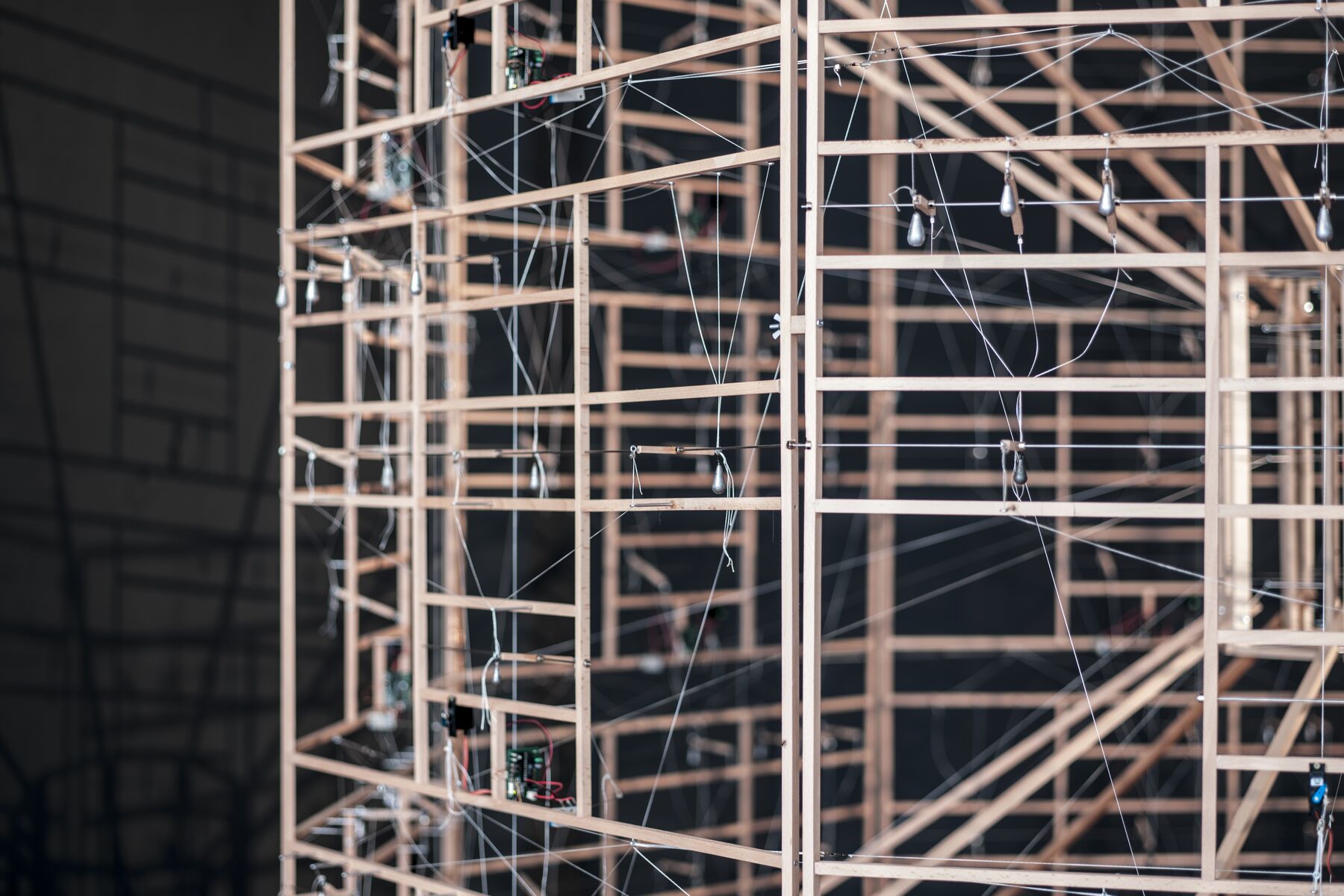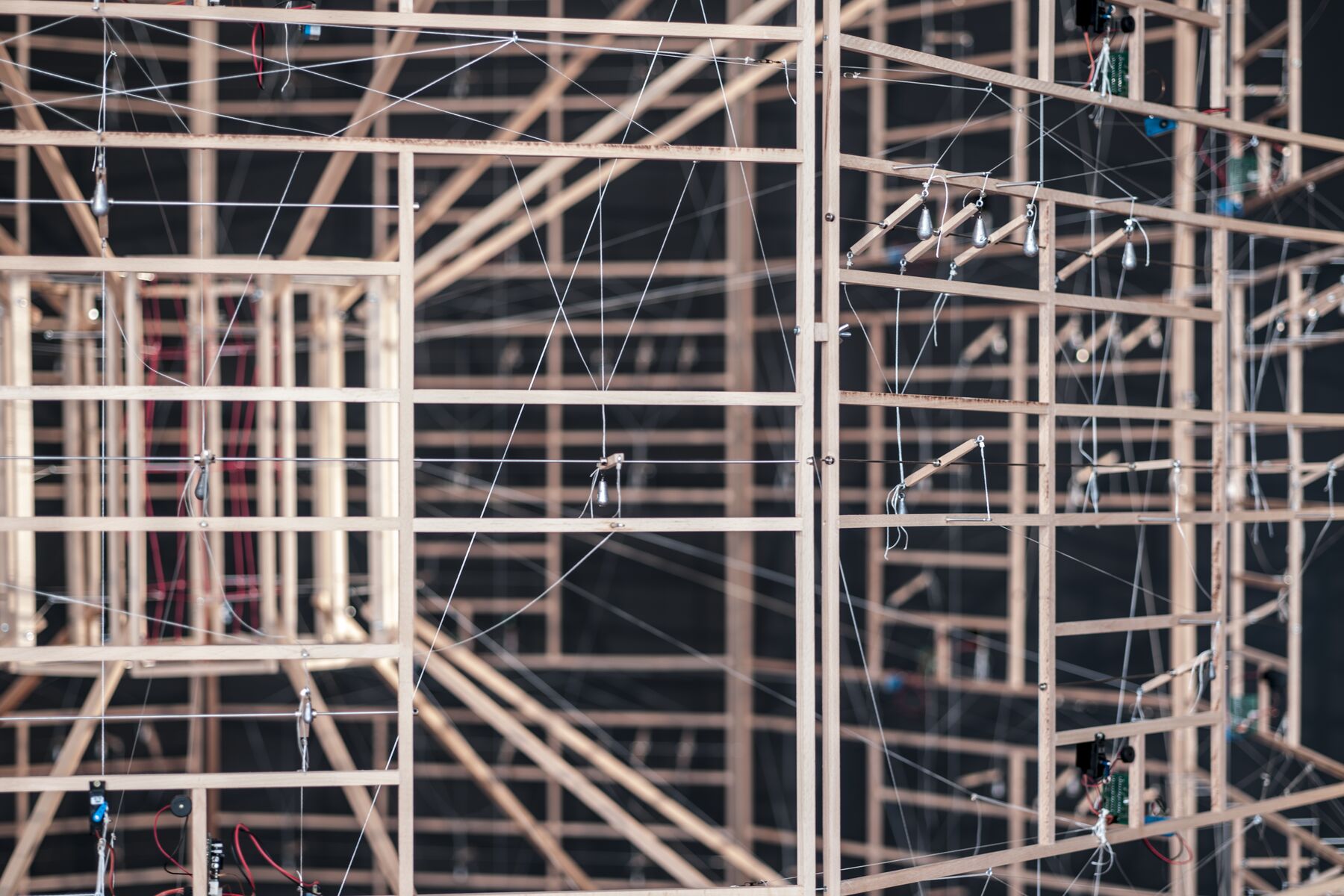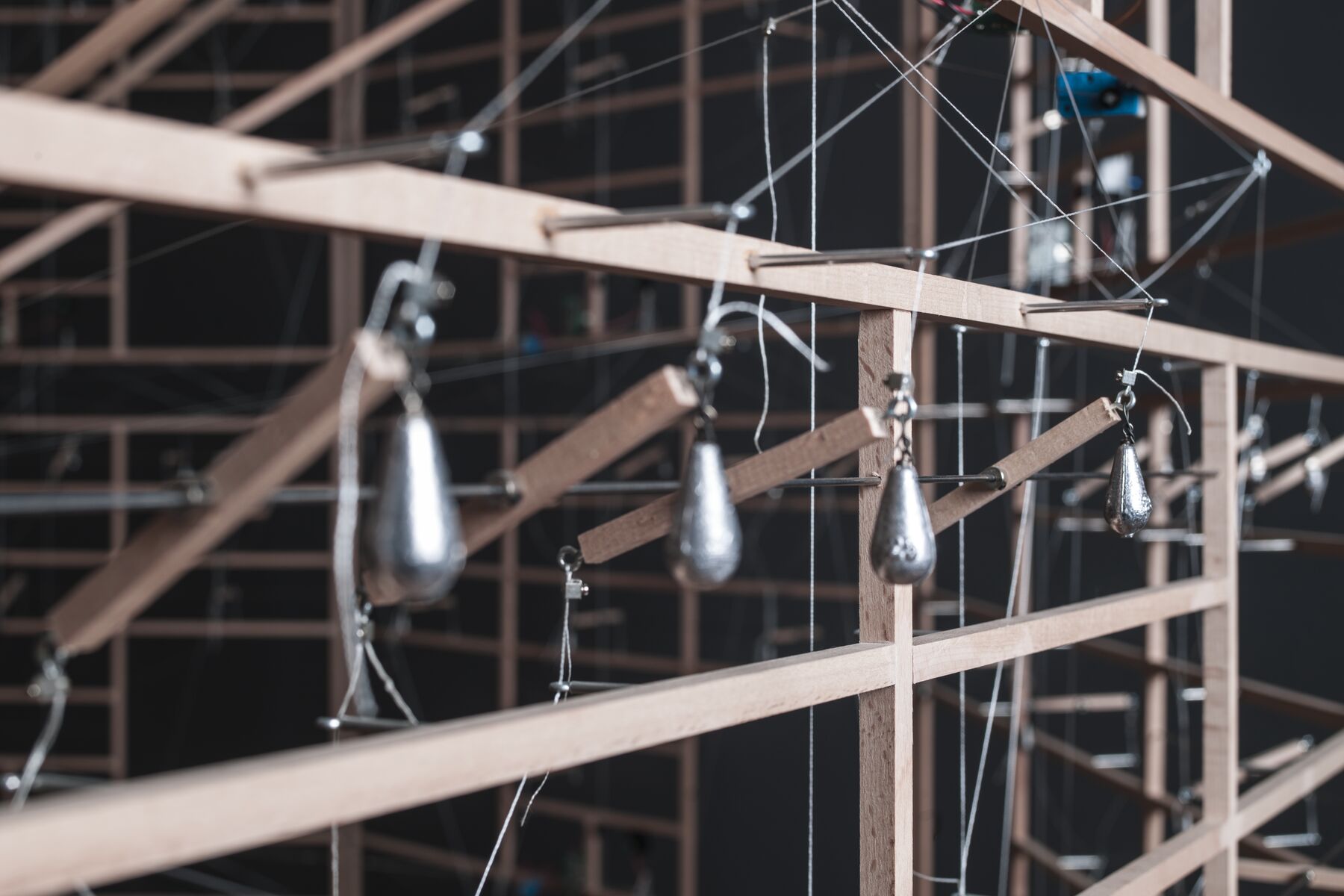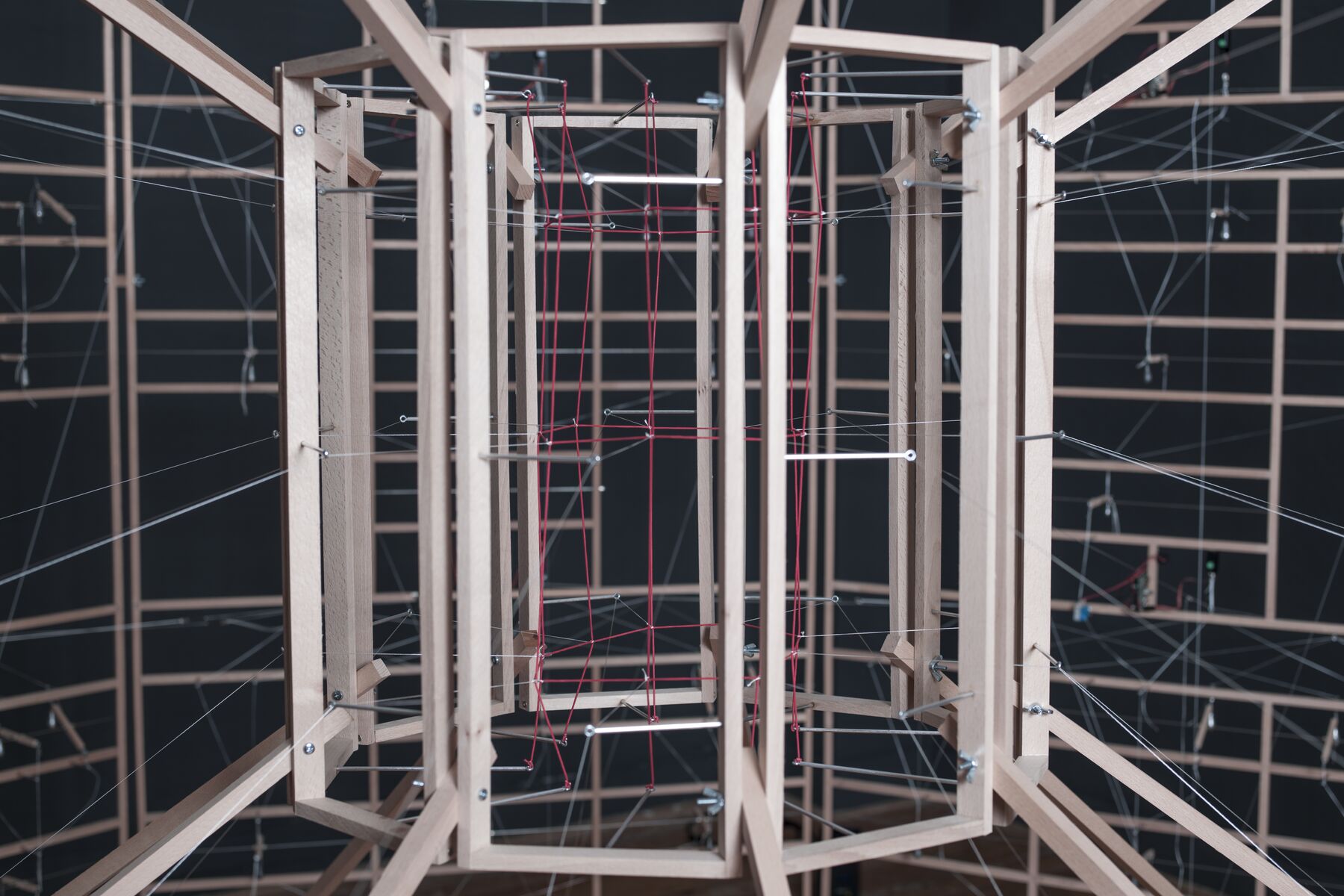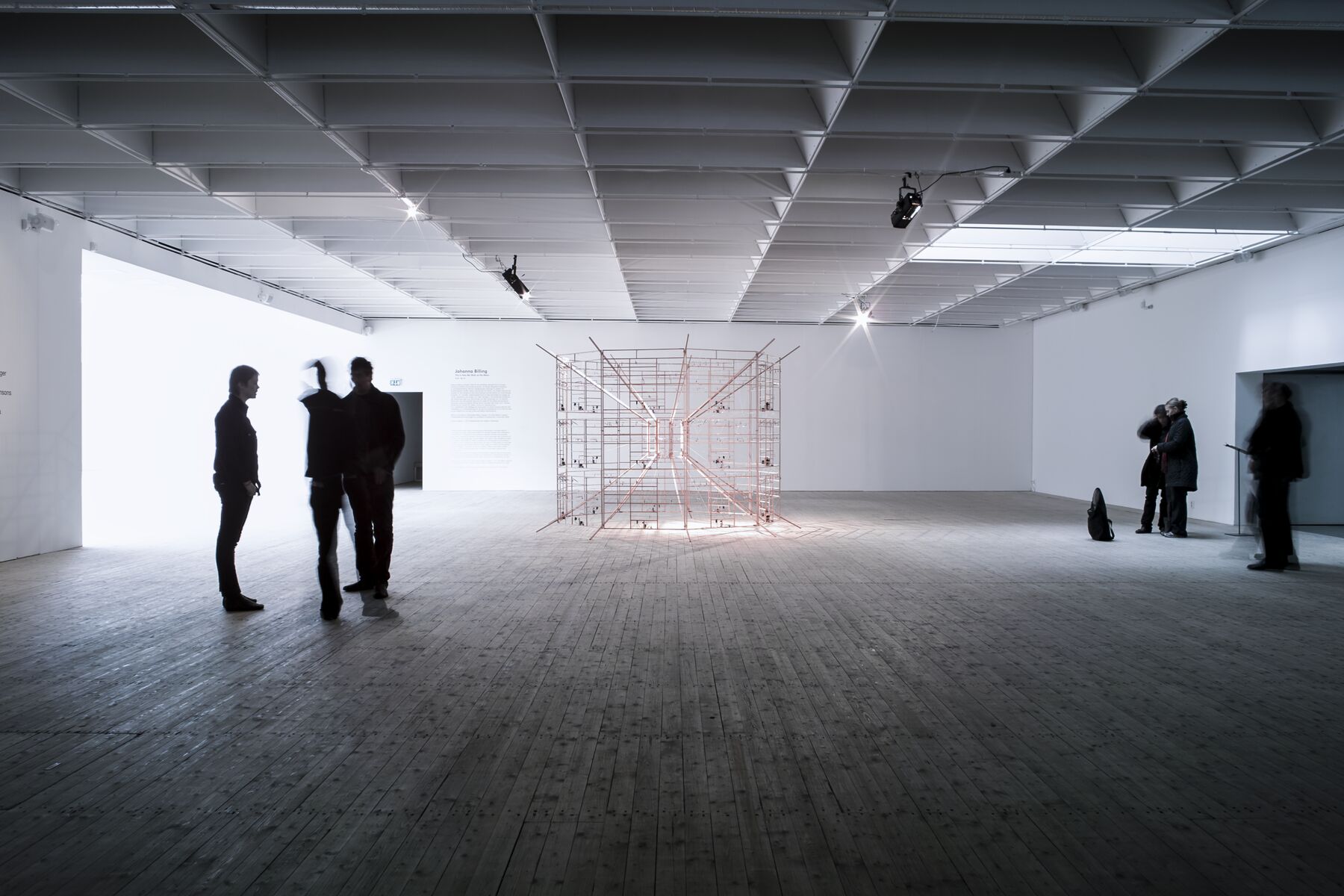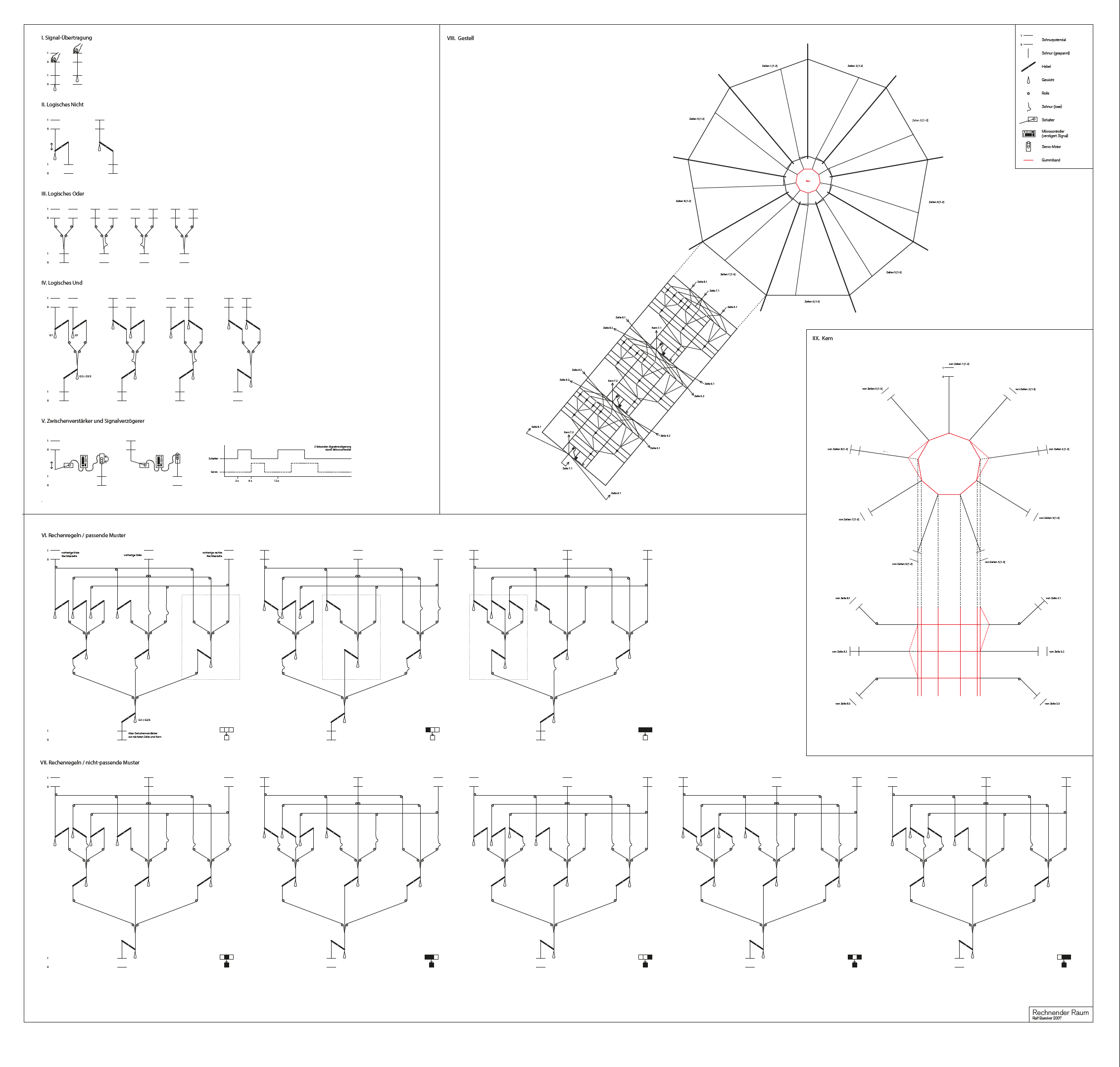Let us pretend that there was a machine, which was constructed in such a way as to give rise to thinking, sensing, and having perceptions. You could imagine it expanded in size (while retaining the same proportions) so that you could go inside it, like going into a mill. On this assumption, your tour inside it would show you the working parts pushing each other, but never anything which would explain a perception. So, perception is to be sought, not in compounds (or machines), but in simple substances. Furthermore, there is nothing to be found in simple substances, apart from perceptions and their changes. — G.W. Leibniz
The inverted machine Rechnender Raum [Computing Space] is a lightweight sculpture, constructed from sticks, strings, and little plumbs. At the same time, it is a fully functional, logically precise, artificial neural network.1 Through its strict geometric and otherwise highly filigreed construction, the observer can track the entire logic circuit from every viewpoint around the machine. This exposure of the machine’s core is reinforced by the uncommon distribution of its constructive elements, with a nine-angled architectural body forming a torus. In contrast to the ordinary arrangement of hidden logic circuits and external, user-facing display, its geometric basis is turned inside-out. The core of the machine, with all its computing elements, is shifted outward, onto the surface, while the “display”, which indicates the results of the tasks, is moved into the center of the system. Even though the tasks and their logic circuits run directly in front of the viewer’s eyes, and even after a long time of contemplating the interaction of the elements that is accompanied by a polyphonic, yet steady and reassuring buzz, it is not possible to grasp the sequence of the machine’s individual conditions. Turning the machine inside out makes its functioning completely transparent, but at the same time it manifests the strict self-referentiality of the machine and its ignorance towards the viewer. The machine turns away from the visitor and carries out its computations only for itself. Without depending on interaction or requesting it, it goes through its own states endlessly. The results of the computations are sent inward—into its own center—they are not intended for the viewer. Hence, an interesting paradox appears: while the machine opens up everything, it closes it at the same time, as though it had a secret. (Georg Trogemann)
Materials:
Beech wood slats, strings (Dyneema), elastic bands, lead weights, servo motors, custom electronics
Credits:
Produced with the support of the Academy of Media Arts Cologne
Exhibitions/Performances:
Weltmaschine / World Machine – Art and Science – An artistic homage to Johannes Kepler
2022-02-18 – 2022-05-15
OÖ Kulturquartier, Linz AT
Just What Is It That Makes Today’s Computers So Uncanny, So Nonsensical?
2019-10-19 – 2020-01-05
Chronus Art Center, Shanghai CN
Thinking Machines. Ramon Llull and the ars combinatoria
2018-11-03 – 2019-03-10
EPFL ArtLab, Lausanne CH
DIA-LOGOS. Ramon Llull und die Kunst des Kombinierens
2017-03-17 – 2018-08-05
Zentrum für Kunst und Medien (ZKM), Karlsruhe DE
The Thinking Machine – Ramon Llull and the Ars combinatoria
2016-07-14 – 2016-12-11
Centre de Cultura Contemporània de Barcelona (CCCB), Barcelona ES
The Paradox of Knowing Universals (solo)
2016-05-13 – 2016-07-03
Kasseler Kunstverein, Kassel DE
In Search for Precise Pleasures (solo)
2013-07-30 – 2013-08-10
LEAP, Berlin DE
Rauchwolken und Luftschlösser
2013-01-06 – 2013-02-10
Gesellschaft für aktuelle Kunst, Bremen DE
Life – Science version
2011-04-01 – 2011-04-17
Center for Contemporary Art WINZAVOD, Moscow RU
WeltWissen. 300 Jahre Wissenschaften in Berlin
2010-09-24 – 2011-01-09
Martin-Gropius-Bau, Berlin DE
Space Inventions. Der künstliche Raum
2010-08-06 – 2010-09-19
Künstlerhaus, Wien AT
The Poetics of Space – Sonic Acts XIII
2010-02-25 – 2010-05-01
Netherlands Media Art Institute, Amsterdam NL
Share Festival – Experiences in digital art & culture
2009-09-01
Share Festival, Turin IT
Rechnender Raum (solo)
2009-05-03 – 2009-06-17
Kunstverein Bochum, Bochum DE
Electrohype 2008 – the fifth biennial for computer based and technological art
2008-11-15 – 2009-01-25
Konsthall, Malmö SE
CYNETart 2008
2008-05-16 – 2008-05-18
Festspielhaus Hellerau, Dresden DE
Artbots 2008
2008-09-19 – 2008-09-21
Science Gallery, Dublin IE
LAB 30
2007-10-15
Abraxas, Augsburg DE
Rechnender Raum (solo)
2007-05-25 – 2007-06-03
Moltkerei Werkstatt, Cologne DE
